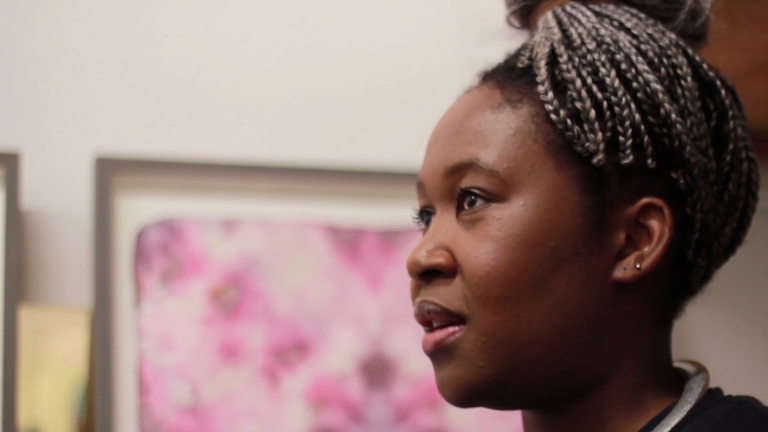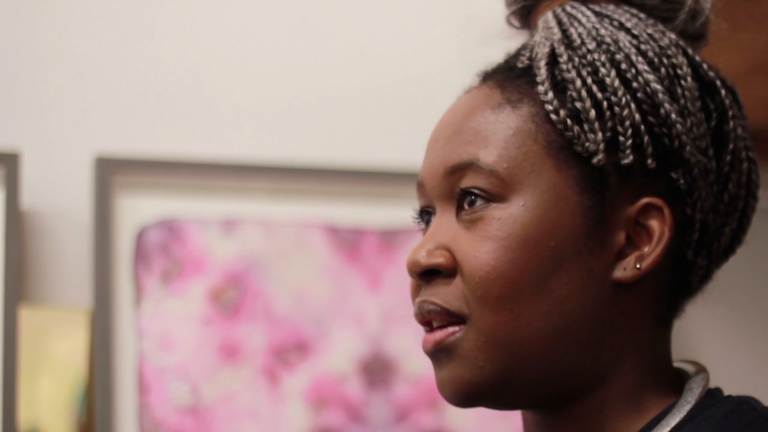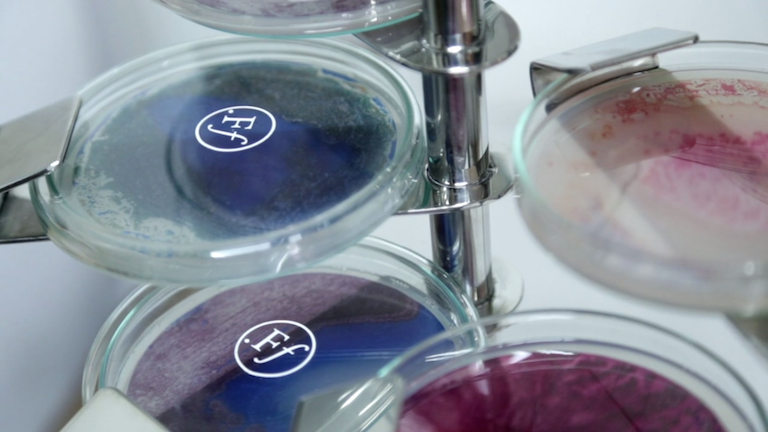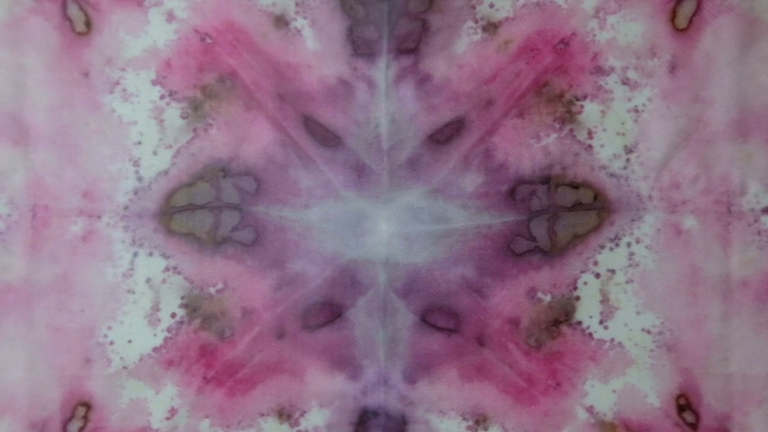Natsai Audrey Chieza
We meet the Design Futurist attempting to introduce bacteria to the textile design industry


Natsai Audrey Chieza is a Design Futurist inspired by material innovation and technology, ardent in her pursuit of alternative craft processes. So much so that the atelier, the workshop, the studio - the traditional habitat for the inquisitive designer - seem almost passé. Chieza is part of an emerging body of design practitioners who work collaboratively with scientists, creating their art from the laboratory. But this is not art for art’s sake; Cheiza is striving to produce viable design outcomes by exploring the significant potential of biodesign and design-lead science, with a view to creating a more robust environmental paradigm.
‘Faber Futures’ is an on-going research project lead by Chieza in collaboration with Professor John Ward, Professor of Synthetic Biology for Bioprocessing at University College London, that aims to find design strategies that appropriate bacteria in our material world.
The Zimbabwe-born London designer was inspired by the idea that bacterium is a viable and largely under-used material. Harnessing the natural capabilities of bacteria is nothing new but Chieza recognised its untapped potential within the profligate design world, and so with the guidance of Professor Ward, began developing basic strategies to integrate synthesised organisms into a design context. Before long they realised that pigment-producing bacteria could dye textiles.

There was this constant tension of really being a design cowboy in the lab, breaking a few rules to be able to realise something that perhaps had its own constraints within the scientific context

Despite Ward’s supervision, the creative in Chieza was keen to experiment with new materials. “There was this constant tension of really being a design cowboy in the lab, breaking a few rules to be able to realise something that perhaps had its own constraints within the scientific context,” says Chieza. However, mistakes often lead to the best results. “You start off with a defined purpose and this changes because you can’t control whether or not that happens, and actually there are some really beautiful consequences of having a contaminant there.” explains Chieza. Turning a blind eye to protocol yielded unforeseen results, Faber Future’s bacterium ink factory produced the world’s first collection of textiles coloured with dyes produced by bacteria.
Faber Futures epitomises the maker revolution, fusing DIY with technological advances and experimentation. “I’ve sort of explored this with resources from UCL and my own resources in quite a modest way and now we know that pretty much anyone can do this” says Chieza. “What’s really exciting is the prospect of the industry looking into this with the right resources and funding. It’s not going to be uncommon to have a synthetic biologist working in a fashion atelier in 2050.”
This prediction probably isn’t all that shocking. It’s more a small part of the vast manufacturing paradigm that Chieza is angling for. Faber Futures and more so synthetic biology is still very much in its infancy but with Chieza’s nurture, perhaps we’ll see her baby grow into the industrial force she’s hoping for.
http://www.natsaiaudrey.co.uk/



Discussion